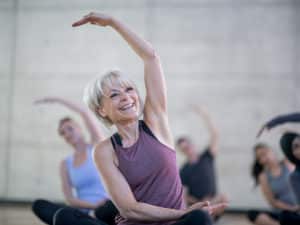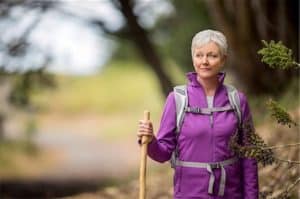Those dealing with illnesses, advanced age, or disabilities tend to be more inactive than the average person. This can cause myriad issues as those individuals rapidly lose strength and endurance and can develop early signs of insulin resistance and molecular changes related to muscle loss. Excessive sitting has now also been linked to many diseases and conditions, including obesity, hypertension, back pain, cancer, cardiovascular disease, anxiety, and depression. Therefore, it’s more important than ever to help your clients get moving every day! We’re here to help with six tips that will support you to incorporate exercise and movement into your client’s everyday life.
1. Keeping up with household chores
Many of our home health aides and CNAs will help with household chores and everyday tasks, but one simple way to remain active is allocating certain tasks around the home and garden to your client. Many elderly people will want to do this anyway, as a way of maintaining a sense of independent living. Maybe your client enjoys cooking, baking, or gardening. Encourage them to take on preparing dinner or tea-time snacks each day. Preparing food from scratch will help them to eat healthier, and cooking or baking can also be a surprisingly vigorous workout: kneading bread, for example, is a great exercise for the hands and fingers that helps them retain fine motor skills. Or, if cooking isn’t their thing, have them commit to watering all plants in the house or yard.

2. Yoga
Doing yoga regularly can result in a host of benefits, from greater flexibility and improved balance to lower stress and better sleep. There are a plethora of practices and styles, including floor yoga and chair yoga, for those who may need a more accessible activity. Set up a computer or television with a YouTube video or rent a yoga DVD from your local library.

3. Daily Walks
Walking is a low-impact form of exercise, but an incredibly helpful one. Doctors recommend at least two and a half hours of moderate exercise a week, and a half-hour walk a day is an easy way to reach this target, almost without noticing. Your client doesn’t necessarily even have to leave the house with the sole intention of “going for a walk,” as even a reasonably swift stroll to the shops to buy a paper or to a local coffee shop can count. If temperatures are running high, make sure they get out first thing in the morning or later in the evening to avoid the hottest points of the day.
4. Arts and Crafts
Try engaging your client in some simple and engaging arts and crafts. Whether it’s painting, knitting, crocheting, jewelry or candle making, certain creative pursuits can increase dexterity in the fingers, which may not get much regular movement.
5. Water-based Exercise
Water-based activities are generally low-impact, with little risk of injury, and are great for individuals with arthritis or stiff joints. Some benefits of swimming include: improved heart health, reduced risk of osteoporosis, and an increase in flexibility, muscle strength, and tone. Have some props ready in case your client needs some flotation assistance, like a kickboard.
6. Stair-Stepping
If your client has stairs in their home, even one or two, you can have them do some light stepping aerobics that will help with endurance and balance. This will also help them to increase their heart rate and get in some low-impact cardio, just be sure to have them hold on to the handrails. Make it a routine by encouraging them to do steps every day before breakfast or lunch.
Looking for more instruction and support on how to help your clients improve their quality of life? Make sure to follow our blog for ideas. If you are interested in exploring home care service job opportunities as a Nurse (RN or LPN), Certified Home Health Aide, or Certified Nursing Assistant in our service area, you have the opportunity to sign up at a Preferred Home Health Care & Nursing Services location near you or by using this website to apply.
